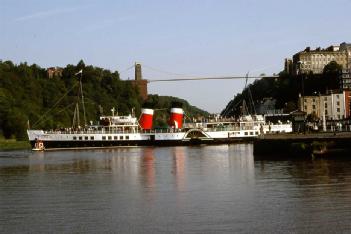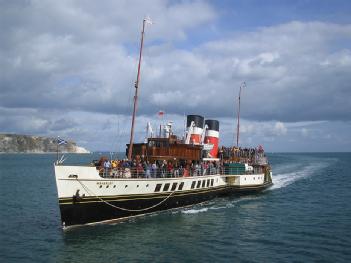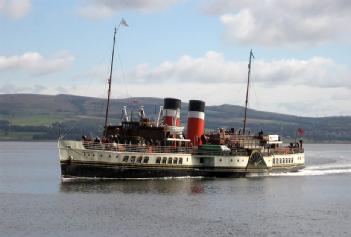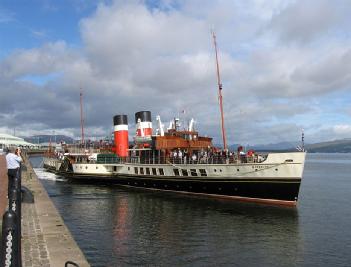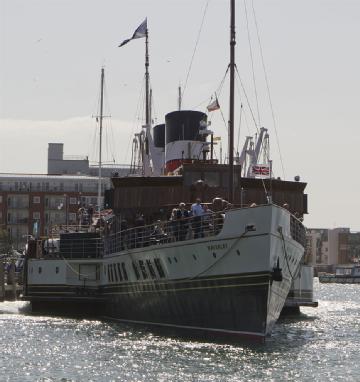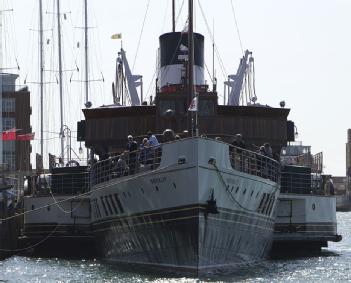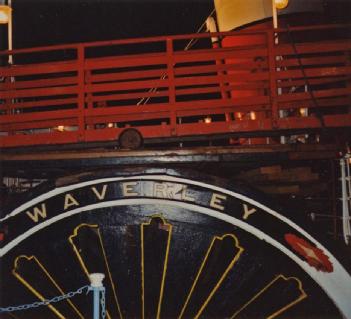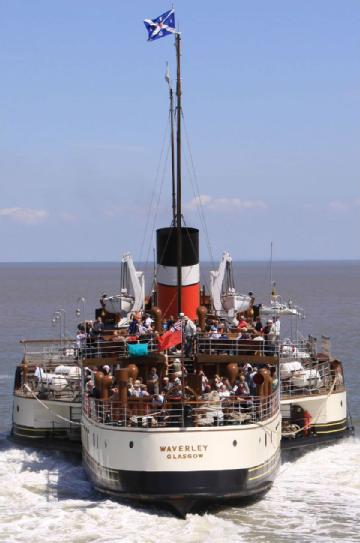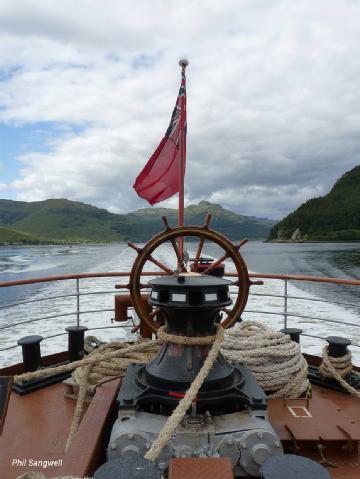| Description
|
Welcome Aboard
Waverley is one of the world’s greatest historic ships – the last sea-going paddle steamer in the world – magnificently restored with towering funnels, timber decks and gleaming varnish and brass. You can see and hear the mighty steam engines as they propel the paddles that take Waverley majestically through the sea.
Waverley starts her season sailing amidst the stunning scenery of the Western Isles and then spends the summer exploring the West Coast of Scotland. She then visits Liverpool & North Wales followed by the Bristol Channel before moving onto the South Coast of England in September and London and the Thames in October.
About The Ship
Named after Sir Walter Scott’s first novel, Paddle Steamer Waverley was built on the Clyde in 1947 – to replace the original Waverley that sunk off Dunkirk during active war service in 1940.
Waverley was originally intended to sail only between Craigendoran & Arrochar in West Scotland. She now sails right round Britain offering regular trips on the Clyde, the Thames, South Coast of England and the Bristol Channel with calls at Liverpool & Llandudno.
Waverley is the world’s last sea-going paddle steamer. In 1975, at the end of her working life, she was famously bought for £1 by the Paddle Steamer Preservation Society. Waverley Steam Navigation Co. Ltd, a charity registered in Scotland, was set up to operate the ship. Waverley then began a second career as one of the country’s best-loved tourist attractions. Since she has been in operational preservation she has been awarded four stars by Visit Scotland, an engineering heritage award, and has carried over 5 million passengers from over 60 ports around the UK.
2003 saw the completion of a major restoration project, which returned Waverley to the original 1940s style in which she was built.
Technical Data
Hull
Passenger Paddle Steamer. Construction: Riveted steel.
Hull designed by A&J Inglis at Glasgow in 1946
Built 1947 by A. & J. Inglis Ltd. at Pointhouse, Glasgow
Fit out 1947 by A&J Inglis at Glasgow
Displacement: 1524600 lbs. Hull Number 1330P.
Originally certificated to carry 1350 passengers. With almost 70 years of updates to worldwide passenger carrying regulations and safety policies in place, Waverley’s carrying capacity has gradually been reduced and she can now carry up to 860 passengers.
Boiler
3 pass wetback reversal chamber Designed by Cochran of Annan, Built 2000 by Cochran of Annan at Annan Fuel: Oil, Pressure: 180 psi, Output: 22500 lbs/hr, 105″ dia X 199″ long Steel barrel. 184 X 2″ dia Steel tubes. Welded with rolled in fire tubes construction, condensing, forced draft fan, steam feed pump, electric feed pump, feed water heater, whistle, Originally fitted with a double ended Scotch boiler, this was replaced in 1981 with a Babcock Steambloc boiler. This was then replaced in 2000 with two Cochran Thermax boilers fitted with Hamworthy Electrotec rotary cup burners. The boilers are fully automatic but can be manually fired if ever required.
Engine
Diagonal Triple Expansion. 24″ + 39″ + 62″ X 66″ Built 1947 by Rankin & Blackmore Ltd. at Greenock Design: Paddle Inside PV on HP. Outside PV on MP. Bal SV on LP valve. Stephenson valve gear. Power: 2100 HP Engine Number 520. Normal service speed of 13 knots at 44 rpm. Maximum speed 18 knots at 57 rpm. Shell and tube surface condenser. Full set of steam auxiliaries.
Paddles
8 Feathering floats. 216″ diameter, 132″ wide. Each paddle float is 36″ deep. There are always two full floats worth in the water at any one time. Each float is 33 square feet in area. |

 waverleyexcursions.co.uk
waverleyexcursions.co.uk 